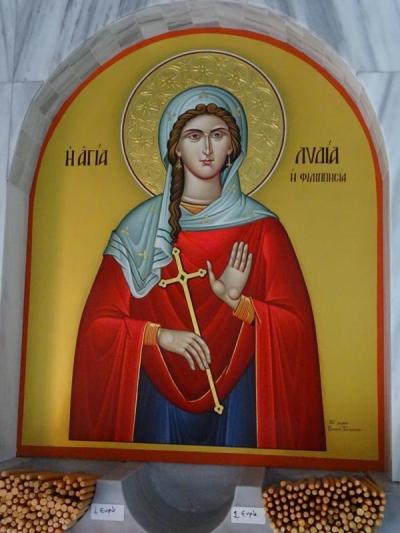
Recently I had the privilege of a pilgrimage in Greece and Turkey where I got up close and personal with some incredible Eastern Orthodox art.
Coming from a Salvation Army faith tradition, with its roots in Wesleyan Methodism, my experience of church trappings is stripped back when compared to the Orthodox tradition. We don’t have ornate church buildings filled with paintings and icons. A Salvation Army hall is meant to be plain and functional.
Early Salvation Army converts — back in the 1860s — came from the slums of East London. Saved through the tent-based outreach of William and Catherine Booth, they were sent back to established churches, only to meet with judgement and discrimination from ‘proper’ church folk uncomfortable with a riff raff of converted prostitutes and drunkards in their midst.
And so, The Salvation Army was born – as a church for the outsiders, inspired by Jesus’s words: ‘Go out to the highways and hedges, and compel people to come in, that my house may be filled’ (John 14:23). Sunday meetings were held in the likes of music halls, with a focus on creating places of welcome where all could feel at home, without cultural or ecclesiastical barriers.
Because this is my faith tradition, I hadn’t worshipped in a setting that included icons and other religious artwork. Which made my time in Greece and Turkey a literal eye-opener. The early Salvation Army conveyed much of its theological teaching in our songs; for the Orthodox Church, the lessons of the Bible and church history are in its paintings and icons. And those icons fascinated me.
The Eastern Orthodox Church venerates icons as one of the ways God is shown to humanity – through pictures of Christ, Mary, the saints, and angels. Theologically, these icons remind us that we are created in God’s image and therefore carry the ‘icon’ (or image) of God within us. Sin marred that divine likeness, and salvation is God restoring his full image within us.
John of Damascus
John of Damascus, an early Church Father, found solace in the icons of his church. He wrote: ‘When I have no books, or when my thoughts, torturing me like thorns, do not let me enjoy reading, I go to church, which is the cure available for every disease of the soul. The freshness of the images draws my attention, captivates my eyes … and slowly leads my soul to divine praise.’
For John of Damascus, church was a place resplendent with Christian iconography that pointed him to Christ. But how am I, living in Aotearoa New Zealand, to find such icons today? Well, it’s not as hard as you might think.
I’m a member of a small group where I see the image of God in others. As we share life together, the ups and the downs of it, they frequently point me to Christ.
These dear friends are icons in my life.
I attend a Salvation Army Recovery Church for those journeying from addition to freedom and wellbeing. When someone first starts coming to Recovery Church, I’ve noticed their eyes are often downcast and clouded. They are burdened by addiction, carrying a sense of personal failure and regret. Sometimes they are weighed down by sins others have committed against them, from which drugs or alcohol provided an anaesthetised refuge. They may also carry a sense of shame at how they’ve wronged people in the past.
Yet, as the weeks pass, their outlook on their identity changes. They start to see their God-given value. Hope and life becomes more visible in their eyes, as does the transformative power of God.
The faces I see at Recovery Church are icons that point me to Christ.
I was at a conference recently where one of the speakers commented that the Bible is ‘our meeting place with God’. Such a simple and obvious statement, and yet the truth of those words gripped me because I realised that is why the Bible is so important in my life. It’s where God and I meet!
My meeting with God in the Bible and in prayer increases my usefulness as an ‘icon’ of Christ for others.
Genesis 1:27 says, ‘So God created man in his own image, in the image of God he created him; male and female he created them.’ All of us are intended to carry the image of God into our world. In fact, when we open our eyes, we can see living icons all around us.

Christina Tyson has been a Salvation Army officer (minister) for almost 30 years.For 16 years she was involved in Salvation Army communications, and now works with her husband as pastors of a Salvation Army church and community centre in Newtown, Wellington.